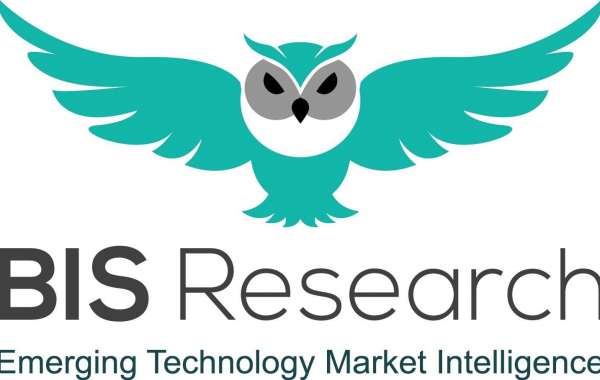The report presents a detailed market analysis including an in-depth analysis of the market drivers, opportunities, challenges, and growth trend mapped across device types, application, and geographies. The market is segmented on the basis of device types (head-mounted displays and head-up displays), application areas and geographical regions. The established presence of smartphones and tablets has been one of the major driving factors for the industry. The impact for this driver is kept high for the next two to three years, owing to the aggressive infrastructural development pertaining to this industry. Investments from leading industry players and the vast presence of original equipment manufacturers (OEMs) has also contributed to the growth of the overall augmented reality and mixed reality market.
Although the demand for these headsets is increasing at a very fast pace, the privacy issues and technical issues such as limited battery life, and image latency, among others, are some of the major concerns working against the massive proliferation of these headsets. In order to counter these shortcomings, companies are looking to develop advanced hardware solutions and next generation technologies such as depth sensing, and simultaneous localization and mapping (SLAM).
The Augmented Reality and Mixed Reality by device type chapter is the result of a comprehensive and rigorous research. The device types that have been prevalent in the augmented reality market include Head-Mounted Displays (HMDs) and Head-Up Displays (HUDs) whereas the device type prevalent in the mixed reality industry include only head-mounted displays. In terms of revenue, HMDs generated more revenue than HUDs in 2017, with the primary reason being the widespread adoption of HMDs in application areas such as industrial, healthcare, automotive, aerospace and defense, among others, as compared to the limited usage of HUDs in the automotive and aerospace sector.
In recent years, augmented reality and mixed reality devices have penetrated a plethora of application areas including industrial, healthcare, automotive, aerospace and defense, and education, among others. The report provides an exhaustive application analysis including the market statistics for different verticals and enumerates various use cases with a futuristic roadmap for each industry vertical. An extensive research and study on the leading as well as developing regions in the augmented reality and mixed reality market such as APAC, North America, Middle East, and Latin America, the report provides the market statistics, drivers, challenges, and opportunities across these regions.
The report also formulates the entire value chain of the market, along with industry trends of augmented reality and mixed reality devices and applications with emphasis on market timelines technology roadmaps, and market dynamics. Some of the key players in the augmented reality and mixed reality industry include Microsoft Corporation, Meta Company, Vuzix Corporation, ODG, Seiko Epson Corporation, DAQRI, Samsung Electronics Co., Ltd., Acer Inc., Dell Inc., and Magic Leap, among others.
Market Overview
Augmented Reality (AR) is the amalgamation of a real time environment as observed by the user, with digital information which can range from a minute thing such as numbers, or text notifications, to something much more complex such as a simulation screen. Augmented reality allows the user to have digital information without peeping onto another device. In contrast to virtual reality, which replaces the real time environment with a simulated environment, augmented reality alters one’s perception of the real time environment. Mixed Reality (MR) is the integration of real world with virtual world in order to produce a pristine environment and visuals wherein the physical and digital objects share a co-existence and interaction in real time. The immersive technology encompasses both augmented reality as well as virtual reality. MR lets one see the real world, along with virtual objects and makes it possible to treat those virtual objects as real entities thereby making the illusion harder to break.
The competitive landscape for the Augmented Reality (AR) and Mixed Reality (MR) devices is shifting towards a more aesthetically pleasing form factor which can be incorporated in the day to day lives of consumers. These technologies are compatible with devices such as smart glasses, head-up displays, and head mounted displays, among others. The market is rapidly expanding, driven by continuous advancements in technology and innovation. It has been a home to changing market dynamics as the established players and new market entrants from various complementary industries try to capitalize on the gains from this lucrative market. The established presence of smartphones and tablets has been one of the major driving factors for the industry. The impact for this driver is kept high for the next two to three years, owing to the aggressive infrastructural development pertaining to this industry. Investments from leading industry players and the vast presence of Original Equipment Manufacturers (OEMs) has also contributed to the growth of the overall augmented reality and mixed reality market. the privacy issues and technical issues such as limited battery life, and image latency, among others, are some of the major concerns working against the massive proliferation of these headsets.
With the presence of industry stalwarts such as Microsoft Corporation, Apple Inc., and Google Inc., among others, the augmented reality and mixed reality market is expected to transform all the present major industry verticals, while growing at a CAGR of 65.1% and 72.0% respectively, during the forecast period (2018-2025).
The augmented reality and mixed reality market has been tracked along the lines of its device types (head-mounted displays and head-up displays), application areas, and geography. Revenue generated from various application areas, namely, industrial, healthcare, automotive, and aerospace and defense, among others, have been analyzed. The report also covers the augmented reality and mixed reality market on a global scale, and consequently provides revenue data of the key regions. A separate segment has been made for the key global regions: North America, Europe, Asia Pacific (APAC), and Rest of the World (RoW).
The device types that have been prevalent in the augmented reality market include Head-Mounted Displays (HMDs) and Head-Up Displays (HUDs) whereas the device type prevalent in the mixed reality industry include only head-mounted displays. In terms of revenue, HMDs generated more revenue than HUDs in 2017, with the primary reason being the widespread adoption of HMDs in application areas such as industrial, healthcare, automotive, aerospace and defense, among others, as compared to the limited usage of HUDs in the automotive and aerospace sector.
Augmented reality headsets are being utilized in all the major industry verticals including healthcare, aerospace and defence, education, engineering, warehousing and logistics, and enterprise solutions, among others. Although the market for these devices is still evolving, yet more and more companies are experimenting with augmented reality devices to increase their productivity and reduce the process downtime. The industrial sector dominates the mixed reality industry, both in terms of value and volume, which can be attributed to increased application areas such as manufacturing and designing, construction, remote maintenance, and quality check, among others.
Geographically, North America dominated the global augmented reality and mixed reality market in 2017 and is expected to witness a strong growth during the forecast period, in terms of volume and value. This dominance is mainly due to the presence of prominent industry players such as Microsoft Corporation, DAQRI, Magic Leap, Inc., among others. Additionally, Asia Pacific is expected to witness the highest growth in the augmented reality market during the forecast period (2018-2025), whereas Europe is expected to witness the highest growth in the mixed reality market during the forecast period (2018-2025).
The global augmented reality and mixed reality market has witnessed several strategic and technological developments in the past few years, undertaken by the different market players to attain their respective market shares in this emerging domain. With product launches such as Microsoft HoloLens, Magic Leap’s mixed reality headset, Seiko Epson’s Moverio, and ODG’s R-8 smartglasses, the industry is witnessing significant developments which are contributing to the growth of the augmented reality and mixed reality market. Some of the key players in the augmented reality and mixed reality industry include Microsoft Corporation, Meta Company, Vuzix Corporation, ODG, Seiko Epson Corporation, DAQRI, Samsung Electronics Co., Ltd., Acer Inc., Dell Inc., and Magic Leap, Inc., among others.
Request Sample - https://bisresearch.com/requestsample?id=504type=download
Key Questions Answered in this Report :
- What will be the global augmented reality and mixed reality market value by 2025 along with the estimated CAGR?
- What are the driving factors for the global augmented reality and mixed reality market through 2017 to 2025?
- Which factors are impeding the growth of the global augmented reality and mixed reality market?
- What are the recent trends and developments in the global augmented reality and mixed reality industry?
- Who are the leading players in the augmented reality and mixed reality market along with their competitive benchmarking?
- Which augmented reality device type will lead the global augmented reality market by 2025?
- What is the revenue generated by augmented reality devices across different application verticals during the forecast period?
- Which application will dominate the global augmented reality application market by 2025?
- Which application will dominate the global mixed reality application market by 2025?
- Which region will lead the global augmented reality market by 2025?
- Which region will lead the global mixed reality market by 2025?
BIS Research Offerings - https://bisresearch.com/our-offerings/subscriptions
You May Also Like -
Liquid Hydrogen Market - Product Type, Applications, Country Data, Analysis and Forecast to 2024









